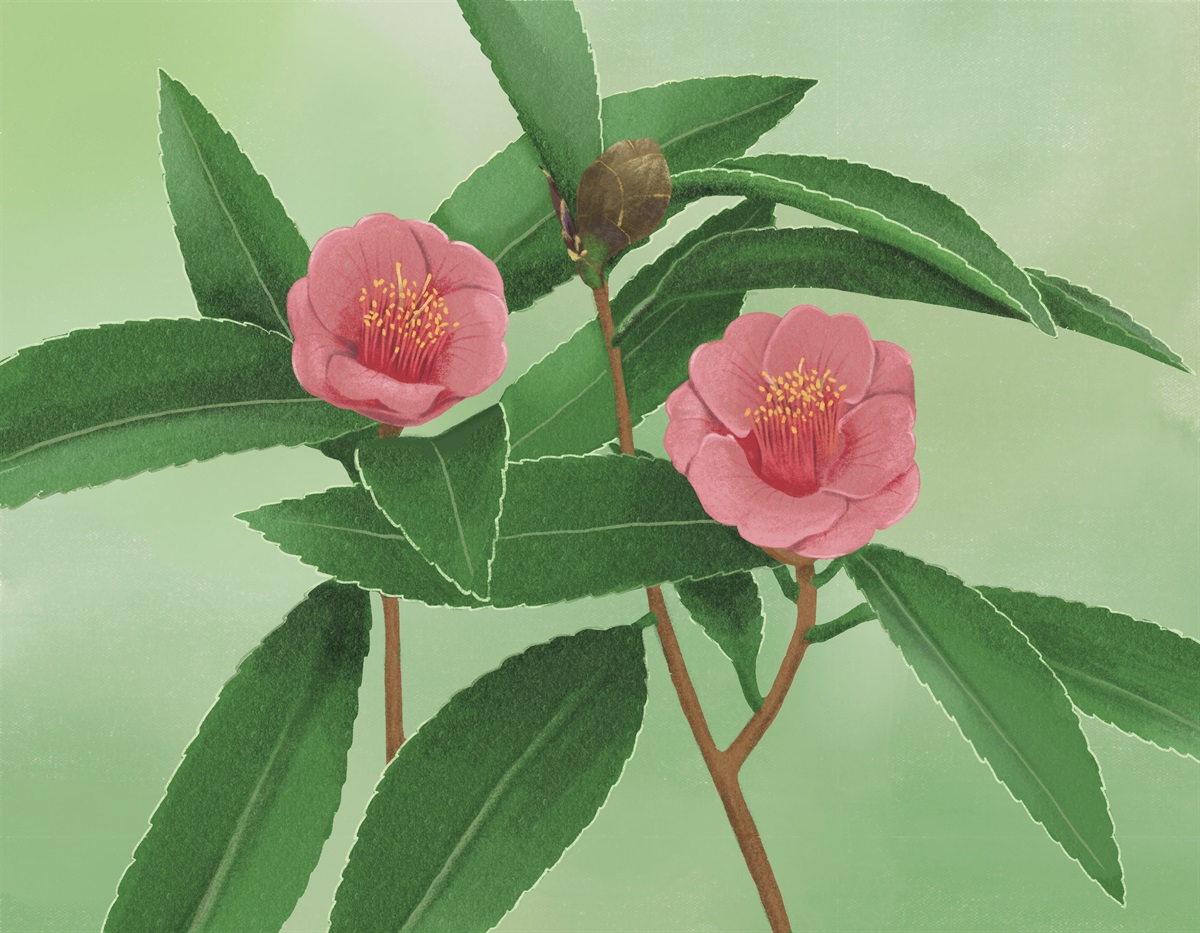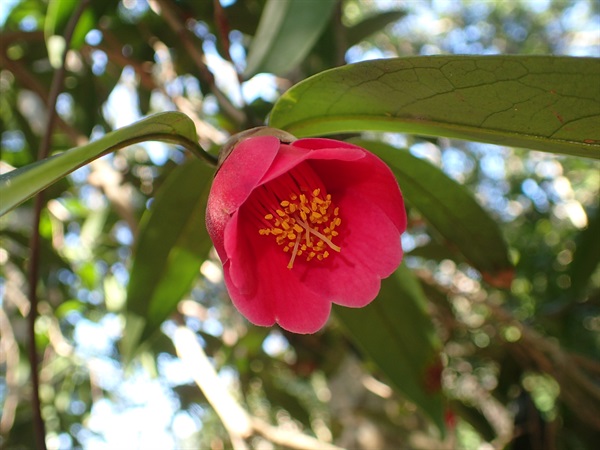There are around 200 species of Camellia in the world, mainly distributed in East and Southeast Asia. This group of plants is not only under spotlight as gardening plants, but they are also important crops. Tea is used to produce tea leaves, and the seeds of some Camellia, such as those of Oil Tea, are raw materials of the edible and industrially valuable tea seed oil. Locally, you can find 11 native Camellia species. Hong Kong Camellia produces red flowers which is rare among native Camellias, though some introduced species, such as Japanese Camellia, also have red flowers.

Hong Kong Camellia was first discovered by Lieut.-Colonel Eyre of the Royal Artillery discovered it in Hong Kong Island in 1849. Initially, only two individuals were found. First taken as Japanese Camellia, Hong Kong Camellia was then described as a new species to science in 1859. Later on, it was also recorded in Guangdong.
The splendid, large, red flowers of Hong Kong Camellia made it a popular pick of local botanical artists, including Geoffrey Herklots, John Eyre and Beryl Walden. Its petals are slightly fused at the base with many stamens, and it blooms from December to January of the following year. Rodents are possible seed dispersers of the species. As these dispersers were largely absent in Hong Kong, this species had difficulty to propagate by themselves. With efforts to conserve the species by the Government, the species is now more readily found in country parks.
| Family | Theaceae |
|---|---|
| Scientific Name | Camellia hongkongensis Seem. |
| Mature Tree Size | About 10 m tall |
| IUCN Red List Status | Endangered |
